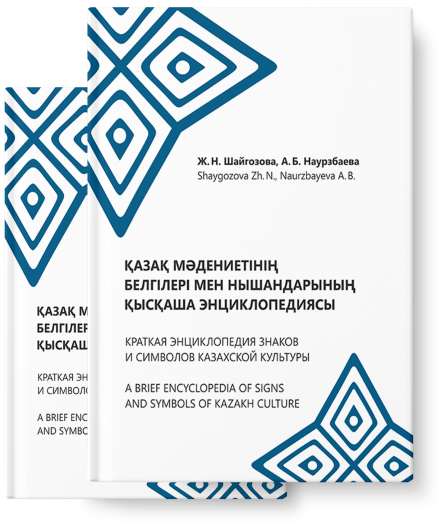
A short encyclopedia of
Signs and symbols of
Kazakh culture

Zhez/mys – copper, due to its technological advantages: ease of processing, the ability to cold forge, etc. in ancient times was widely used and defined the character of the whole epochs – the Copper Age. To copper were attributed magical and enchanting properties – a protector from evil and impure forces, a helper in love magic, etc.
In ancient times, the metal was of great cultural and economic importance as a means of trade and exchange. In world culture, copper symbolically represents the planet Venus as its earthly counterpart. In Kazakh culture, copper is translated in two ways: “mys” and “zhez”. This metal in mythopoetic texts connected with the female demon images Mystan Kempir (in the sense of a treacherous old woman), Zheztyrnaq (woman with copper claws), and Zheztūmsyq (woman with copper beak). The early Altai epic contains references to a copper tambourine (zhes tungur) whose mistress is an ancient shamaness (kam-emegen). Tajik shamanesses used exclusively copper utensils: plates, jugs, bowls, etc. It is believed that the association of copper with female imagery and female shamanism is due to the subterranean world from which the metal is extracted (analogy to the female womb), the “fiery” processing of metal, fertility, etc.
On the other hand, copper in Kazakh culture is associated with the idea of beauty, apparently because of the noble lustre and colour of the metal. Its colour is understood as red. In the understanding of beauty, expressions such as zhez kiik (copper hind), zhez kirpik (copper eyelashes), zhez qanat (copper wings), zheztañdai (copper palate) and others are used, which are often found in Kazakh folklore.

